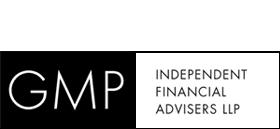Global investment strategy and asset allocation – July 2010
July 19th, 2010
Andy Brunner, chief investment strategist at OBSR, assesses the outlook for world markets and, based on this, offers his thoughts on asset allocation strategy The global economy has staged a strong recovery with world output forecast to have grown at a near 5% pace over the year to the end of the second quarter. In geographic terms, Asia – and particularly China – led the revival with the US, and to a degree Japan, providing a substantive boost to growth in the developed world. The rebounds in the eurozone and the UK were far more muted. The key components to the recovery were substantial inputs from governments and central banks via fiscal and monetary stimulus and a 10% year-on-year surge in global industrial production. As world trade picked up, demand could no longer be met from inventories and a rejuvenated manufacturing sector provided the springboard for a recovery in capital expenditure and hiring. The next phase for the global economy is the transition of the business cycle from recovery to sustained expansion. In the developed economies it is at this stage that the temporary and cyclical factors, such as the bounce-back in world trade, the upturn in the inventory cycle and policy-induced demand, begin to fade and private domestic demand takes up the reins. Risks to economic forecasts are high, however, given the difficulties of disentangling the effects of cyclical boosts to sustainable demand. In this particular business cycle the risks are even greater due to the massive rise in government deficits creating instability in sovereign debt markets together with overheating in a number of developing economies. Fiscal tightening has been forced towards the top of the policy agenda for many countries with the UK, for example, following a number of peripheral European countries in announcing a very austere budget and a severe deficit/debt reduction programme. As noted, this is coinciding with the peak in cyclical growth momentum, the turn in leading indicators and industrial production downshifting. This has raised question marks over the strength of the global economic rebound and indeed, the media is full of references to the possibility of a double-dip recession, even as most professional forecasters remain sanguine with above-trend growth projections. These fears gained further currency as, following a mildly disappointing Chinese PMI survey, a slew of weaker than expected economic figures were reported in the US. While data had been expected to moderate over the summer months, particularly in the manufacturing sector, US consumer and business confidence appears to have suffered from the recent turmoil in financial markets. While this should not cause too significant a slowdown – the corporate sector is in considerably better shape and consumers’ financial position is far stronger than in 2008 – it has raised the level of anxiety for investors. This is because growth in consumption (through job and income growth) and fixed investment (via higher capital expenditure) are an integral part of the handover from the recovery phase (inventory and government support) to a sustained US expansion. Anything potentially interrupting this process, therefore, is of considerable concern to investors who, once again, have shown little disposition to wait and see whether the outcome is merely a slowing in growth momentum, typical of all cycles, or something worse. The result was another difficult month for equity markets and strong gains for government bonds, especially longer-dated. Interestingly, corporate bond yields followed government yields lower and even high yield bonds produced price gains despite rising economic angst. While European sovereign debt worries persist, investors have become increasingly concerned about the implications for the European banking system and the ability of many banks to finance themselves. Towards the end of June, these tensions were salved somewhat by plans for the publication of “stress tests” for the leading 100 European banks, while bank refunding via the ECB was relatively comfortably executed with far less funding required than feared. Taking all this into consideration, our current asset allocation views are: * Equities: It has long been forecast that 2010 would prove to be a much more difficult year for equity markets, although positive returns were and still are forecast. The main issues centred on government and central bank exit strategies and the transition, in principally the US economy, from the recovery phase to sustainable expansion. Attempts to tackle government deficits have dominated most of the past few months but in recent weeks it is the economic recovery that is being questioned and fostered another downleg in equity markets. It is far too early to determine whether deteriorating confidence will have a lasting economic or profit impact but many equity investors have decided that discretion is the better part of valour. For those who believe – as we do – that a double-dip is unlikely, equity prices are now at very reasonable valuation levels but, in the near term, this may not prohibit them from further downdrafts over the summer months. It may well take many months to disentangle the contagion effects of confidence from the cyclical slowdown now underway and many investors will prefer to wait and see how this develops. For those of a braver disposition at least the potential rewards are now more commensurate with the risks. As long as reduced economic and profit expectations are met, then current valuations would suggest very reasonable upside over the next six months but, even if they falter, there are still some very decent dividend yields around. There is still little to choose between the main geographic areas although Europe’s period of underperformance could be over while those, such as Japan and the emerging markets, which benefit most from cyclical growth may stall somewhat in the near term. Currencies have been the key factor in relative returns and will likely remain so for several months. Investors should favour good-value defensive growth stocks, high-yielders and exposure to growth markets. From today’s levels, gains this year should handily outpace those for most other asset classes but an ability to withstand volatility is essential. * Bonds: The scale of the move in the main government bond markets has come as a surprise but reflects the deep unease felt by investors when hit by financial crises and perhaps the fact that cash yields virtually nothing. For some time we had been fairly ambivalent about the level of yields over the next quarter or two – the very steep yield curve, falling core inflation and bank and overseas central bank buying – but noted that “a more palpable rise in yields is expected late this year and next”. From today’s levels this is still the view. Relatively, corporate bonds are better value and should outperform governments but they are now a source of higher income rather than capital gain. Investment grade bonds offer the potential for reasonable returns going forward with some further narrowing in spreads. * Property: After such a strong yield impact-led recovery in capital values, the property market has calmed down over the past few months. The weight of money chasing high-quality properties resulted in prime capital values rising by nearly 25% year-on-year even as All-Property rentals continued to fall. With banks now becoming keener to supply the market with portfolios of properties from their involuntarily built stockpiles, this and waning natural enthusiasm should impinge on further capital gains. With income in excess of 3.5% above 10-year gilts for even prime properties, however, the sector should comfortably outperform both cash and government bonds, at least this year. * Commodities: Predicting commodity returns is always a difficult call given the very broad spread, high volatility and problems associated with rolling over futures contracts on returns. As long as the global economic background develops as anticipated, however, the favoured commodities, such as oil and copper, where there are clear long-term demand/supply imbalances, should hold up. A substantial build up in inventories, especially in copper, remains a short-term concern that could lead to further pressure on prices but, in general, industry “experts” remain relatively sanguine about medium-term prices for the key industrial metals and crude oil. Valuations of the major diversified miners have fallen precipitously in recent weeks and look far better value on the now admittedly more debatable assumption that both US and Chinese economic growth confirm even lowered expectations. * Currencies: As ever currencies present all sorts of conundrums for investors. Will sterling continue to benefit from the UK’s newly found fiscal zealotry or will this be overridden by a deleterious impact on economic growth? Alternatively, will lower shorter-term rates – for example, two-year gilts now yield 0.8% – prove sustainable in the light of rising inflation that will ensure substantial negative real returns over the next year? The best guess is that sterling may have some further upside on a trade-weighted basis, given the scale of its prior collapse in the absence of such fiscal rectitude, but gains will be fairly limited. While the euro appears close to the end of its rout, as the global economic slowdown replaces the focus on Europe, it is interesting to note the dollar missed out on the latest “safe haven” rally and again the squaring of growth needs with huge fiscal and growing current account deficits provides ammunition for both bulls and bears. Old Broad Street Research works for many of the best-known firms in the financial services industry, offering products and services to fund managers, product providers, wraps and platforms and large distribution firms as well as to individual advisers. The firm’s research is highly regarded by fund managers, product providers and professional intermediaries alike, with OBSR Fund Ratings widely acknowledged as an independent mark of quality. For all your investment requirements, call Mark or Clare at GMP Independent Financial Advisers LLP on 0207 288 6400

